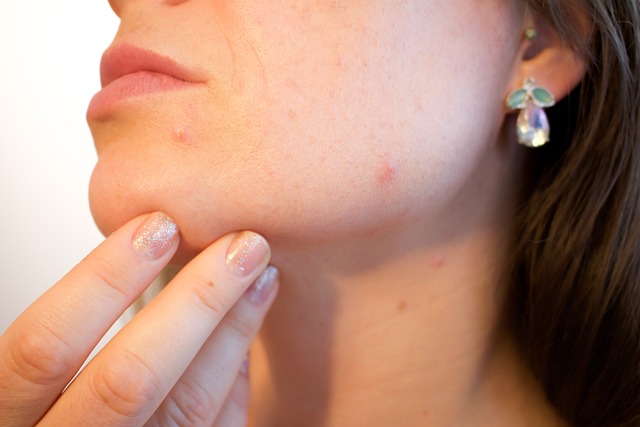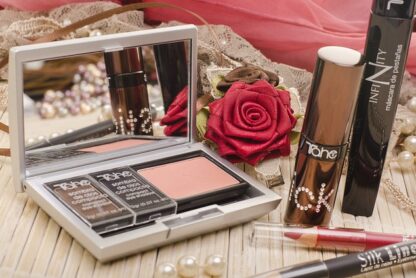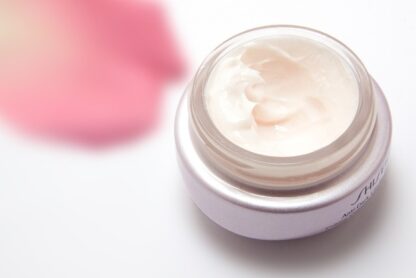Introduction
If you’ve ever had a white bump on your face, you know how frustrating it can be. They’re typically small, but they can be very noticeable and make you feel self-conscious. And, of course, the first question is always “What is it?”
In this article, we’ll take a look at some of the most common causes of white bumps on your face and what you can do about them.
First, let’s start with the most common cause: milia. Milia are tiny cysts that form when dead skin cells get trapped in your pores. They’re usually white or yellowish and can appear anywhere on your body, but they’re most commonly found on the face. Milia are harmless and don’t usually cause any pain or irritation.
Milia are fairly easy to treat at home. You can use a sterile needle or tweezers to gently puncture the cyst and release the trapped skin cells. You can also try over-the-counter treatments like retinoids or exfoliating agents. If home treatment doesn’t work, you can see a dermatologist for professional extraction.
Another common cause of white bumps on your face is sebaceous glands. These are small glands that secrete an oily substance called sebum to keep your skin moisturized. Sometimes these glands can become blocked and swell
Types of White Bumps on the Face:
There are a few different types of white bumps that can occur on the face. The most common type is called milia, which are small, white bumps that form when dead skin cells become trapped in the pores. They are not typically harmful and can often be removed by gently exfoliating the skin.
Another type of white bump is known as a sebaceous filament. These are tiny, hair-like structures that occur when sebum (oil) becomes clogged in the pores. Although they are not harmful, some people may choose to remove them for cosmetic reasons.
Finally, there are whiteheads, which are small bumps that form when oil and dirt become trapped in the pores. Unlike milia and sebaceous filaments, whiteheads can become inflamed and irritated, so it is important to cleanse the skin regularly to prevent them from forming.
- Milia
Milia are small, white bumps that can form on your face. They’re most commonly found around your eyes and on the cheeks, but can also occur on the forehead and chin. Milia are very common and completely benign.
Milia occur when dead skin cells become trapped in small pockets on the surface of your skin. They’re often seen in newborns, but can occur at any age. Milia can also be caused by certain skin conditions, such as acne or eczema.
There’s no need to treat milia as they’ll usually resolve on their own within a few weeks. However, if you want to get rid of them sooner, you can try using a topical retinoid cream or exfoliating with a gentle scrub.
- Fordyce Spots
Do you have little white bumps on your face that appear to be pimples? If so, you’re not alone. Many people have these bumps, which are called Fordyce spots.
Fordyce spots are small sebaceous glands that are not connected to a hair follicle. They’re commonly found on the lips, cheeks, and genitalia. The spots are harmless and don’t cause any symptoms, but some people may find them bothersome.
There is no treatment for Fordyce spots. However, if you’re concerned about their appearance, there are a few things you can do to make them less noticeable:
• Apply a topical retinoid cream or gel such as tretinoin or adapalene. These products can help to improve the appearance of the skin by increasing cell turnover.
• Use concealer or foundation to cover up the spots.
• Try laser therapy or light therapy. These treatments can help to reduce the appearance of the spots by destroying the sebaceous glands.
If you’re concerned about Fordyce spots, talk to your doctor or dermatologist. They can help you determine whether the spots are actually Fordyce spots and advise you on the best course of action.
- Sebaceous Hyperplasia
Sebaceous hyperplasia is a benign growth of the sebaceous glands. These are the glands in your skin that produce oil. The overgrowth usually occurs on the face, chest, and back. It’s not cancerous or precancerous.
The cause of sebaceous hyperplasia isn’t known. But it seems to be linked to sun damage and aging. The condition is more common in middle-aged and older adults, particularly women. People with fair skin are also at higher risk.
Sebaceous hyperplasia generally appears as small, yellowish bumps on the skin. They’re usually less than 1 centimeter (0.4 inches) wide. They can be mistaken for pimples or other skin conditions such as warts or moles.
If you have sebaceous hyperplasia, you may notice:
A change in the texture of your skin
An increase in the number of bumps on your skin
Bumps that are larger than usual
You can have just a few bumps or many. They may be scattered across your skin or grouped together in one area. They may appear as early as your 20s but are more likely to show up later in life.
- Acne
Acne is a common skin condition that occurs when the hair follicles become clogged with oil and dead skin cells. The most common areas affected by acne are the face, chest, and back. Acne can occur at any age, but it is most commonly seen in adolescents and young adults. There are several factors that can contribute to the development of acne, including genetics, hormones, diet, stress, and certain medications.
Acne is typically treated with topical or oral medications. Topical treatments include retinoids, antibiotics, and benzoyl peroxide. Oral medications include antibiotics and isotretinoin. In some cases, laser therapy or light therapy may also be used to treat acne.
Causes of White Bumps on the Face
There are many potential causes of white bumps on the face. They can be caused by a variety of things, including:
-A build-up of oil and dead skin cells in the pores. This can happen when the skin is not properly cleansed, leading to clogged pores.
-Infections, such as those caused by bacteria or viruses.
-Allergies to certain substances, such as cosmetics or environmental irritants.
-Autoimmune disorders, such as psoriasis or eczema.
If you are concerned about the white bumps on your face, it is best to consult with a dermatologist or other medical professional for an accurate diagnosis and treatment plan.
Treatment and Prevention Options
There are a few things you can do to treat and prevent the formation of white bumps on your face. For one, make sure you’re cleansing your face properly every day. Use a gentle cleanser that won’t strip your skin of its natural oils. Exfoliating once or twice a week can also help to slough off dead skin cells and prevent clogged pores. Be sure to use a non-abrasive exfoliator so as not to irritate your skin.
In terms of prevention, it’s important to protect your skin from the sun. Use a sunscreen with an SPF of 30 or higher every day, even if you don’t plan on spending time outdoors. Remember to reapply every few hours if you are sweating or swimming. Wearing protective clothing like long sleeves and hats can also help shield your skin from harmful UV rays.
Conclusion
White bumps on the face can be caused by a variety of different things, ranging from simple acne to more serious medical issues. It’s important to take note of any changes in your skin and visit a doctor if necessary. Knowing what could be causing these white bumps on your face will allow you to treat them properly so that they don’t become worse or cause lasting damage. With the right diagnosis and treatment plan, you’ll soon have clear, smooth skin once again!









